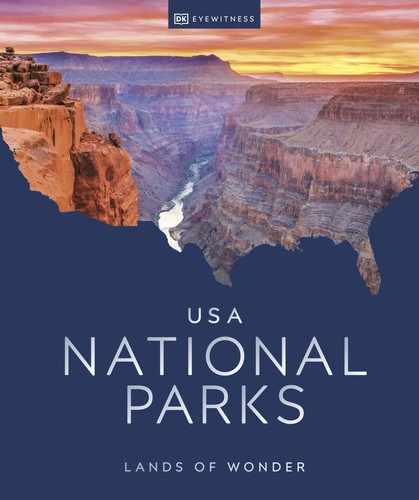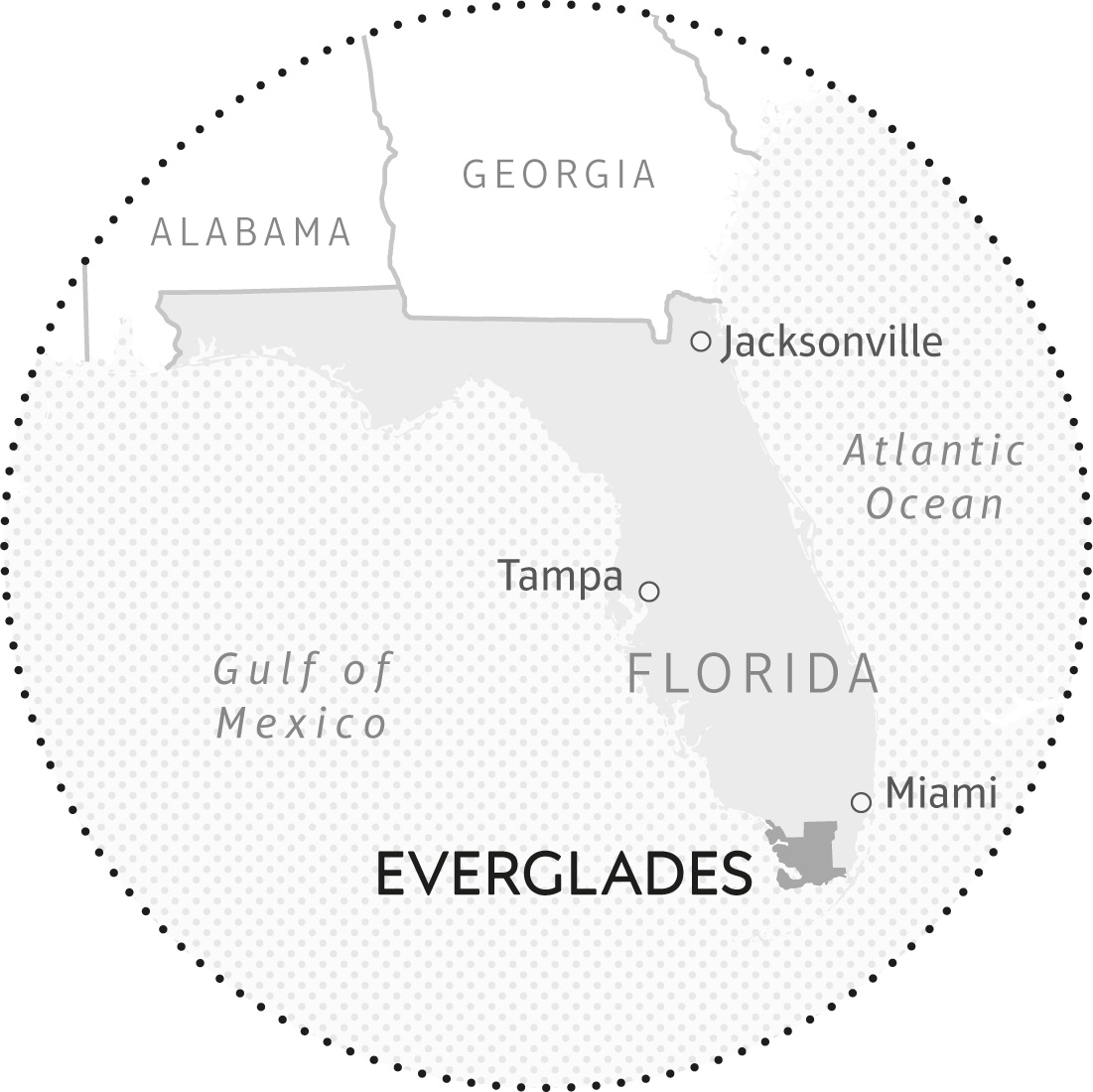
Florida
EVERGLADES
ESTABLISHED 1947
Forming one of the most enduring images of Florida is a broad expanse of wetland dotted with tree islands. With a peculiar beauty that is a paradise for its prolific wildlife, this is one of the world’s most precious places.
On the southern tip of the peninsula, the vast wilderness of the Everglades acts as a fascinating natural counterpoint to the beach and city focus in the rest of the state of Florida. Comprising swamps and marshes, forests and islands, and an endless supply of water, Everglades National Park is the ideal place to explore this famous natural wonder and the many rare and endangered species that call it home.
Despite being bigger than Delaware, at 1.5 million acres (0.61 million ha), only a few hundred people live here. The rest of the inhabitants fly, walk, swim, or slither their way around. In this unique ecosystem, you’re guaranteed to sight thrilling creatures including alligators, the more reclusive crocodile, and the strange beast that is the manatee. Best of all, this open expanse offers myriad ways to get up close to these inhabitants and the dense landscape, with hiking trails, inviting waterways, and even one long, winding road.
![]()
Walk the Mahogany Hammock Trail for great wildlife photos, especially of the barred owls that make their home here.
On the water
Although it’s thought of as a wetlands, the Everglades is actually an enormous and slow-moving river, some 200 miles (322 km) long. It begins life at the Kissimmee River, from where it makes its lazy way south, passing through several lakes until it finally reaches Lake Okeechobee. The name Okeechobee, a Seminole word meaning “River of Grass,” aptly describes this unique landscape where water and land merge.
The river gathers the waters of the lake in its arms and together they continue to flow slowly south toward Florida Bay. As the land narrows and the water widens, they eventually form a river that’s over 100 miles (160 km) long and up to 60 miles (97 km) wide, stretching from the Atlantic Ocean to the Gulf of Mexico. This slow flow is the result of the very gradual slope of the land from north to south, as well as the marsh vegetation that the water seeps through.
Take to the open waters by renting a canoe or kayak, breathing in the tropical air, and immersing yourself in mangrove forests. Wherever you choose to set off from, you would swear the water wasn’t moving at all. Its slothlike speed is close to 0.25 miles (0.4 km) per day, making for a leisurely trip that ensures you’re truly at one with the river.
With trails through the waters that last only an hour, to routes that take up most of the day or even a week, the wetlands at Everglades National Park are calling out to be explored by all. The more adventurous can take on multiday backcountry excursions that feel like a behind-the-scenes glimpse of nature, and stay overnight at elevated camping areas, or “chickees,” though you’ll need a permit. If you’d rather stay solely on the languid river, board an organized boat trip from the settlement of Flamingo or take an airboat ride above the swamps for a unique perspective.
Moving in your own canoe, though, and at your own pace, adds a frisson of nervous excitement as you glide through the water, looking for the next marker to ensure you don’t get lost in this tangle of trees and mangrove tunnels. A chorus of croaking from the various species of frog and toad that live here will be one of the few sounds that pierce through the idyllic solitude as you paddle along—this, and the peculiar noise made by the gulf toadfish, which gets its name from the toadlike call that’s a cross between a grunt, a whistle, and a low boom. There’s the thrill, too, of getting close—but not too close—to the park’s incredible crocodiles and alligators. The waters of the everglades are truly magical.
FAMILY FUN
Plunge Your Paddle
It’s hard to beat kayaking together as a family. Kayaks are available to rent at several places in the park, or you can bring your own. Head off on the easy Nine Mile Pond Trail near Flamingo and keep an eye out for wildlife.

On a thrilling airboat ride above the swamps, groups are treated to the park’s untamed environments
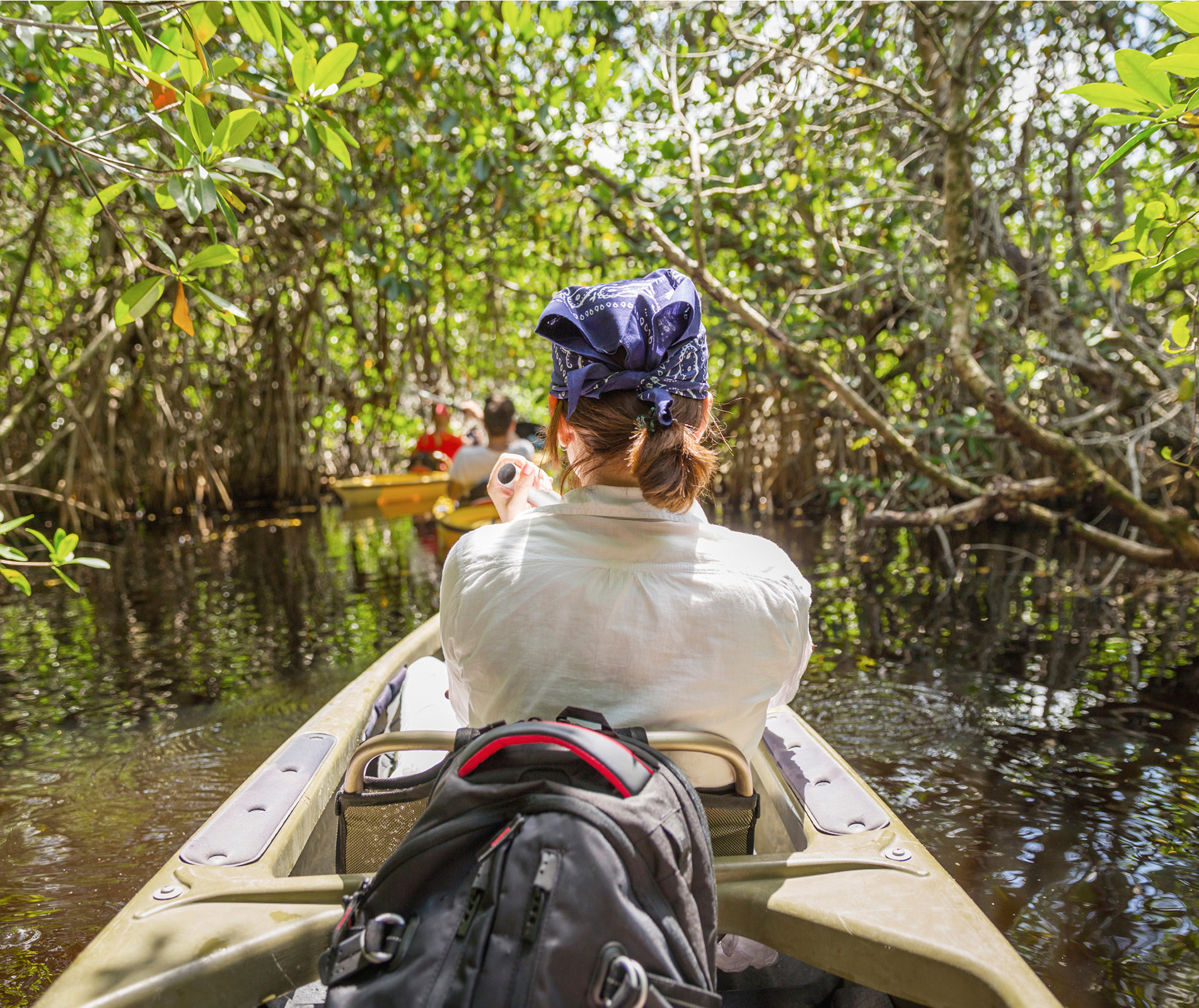
Kayaking through the mangrove forest canopy is the best way to explore the watery trails
On the land
Away from the famed waters, the park has plenty to offer in the way of scenic walking and cycling trails, from those that offer expansive views over the Everglades to lesser-known trails through wooded areas.
Despite its vast size, the park has only one main road, called simply the Main Park Road (Route 9336)—but what a road it is. With various boardwalk trails that lead off the highway and a handful of minor side roads on the route, a journey down this stretch easily turns into a full-day adventure. The most beautiful and less-visited of these trails lies between Mahogany Hammock, where bromeliads live and junglelike vegetation is especially dense, and Flamingo, where birdwatching is at its best and highly rewarding in the early morning and late afternoon.
Before embarking on the park’s labyrinth of trails, the highly informative visitor centers are excellent places to learn more about the unique landscapes you’ll traverse. At the main park entrance, the Ernest F. Coe Visitor Center offers orientation films and educational displays, as well as the chance to converse with the rangers who live and breathe the park.
A few minutes farther on, a side road takes you to the Royal Palm Visitor Center, the setting-off point for two of the most popular—and best—little trails in the park. The wheelchair-accessible Anhinga Trail passes over Taylor Slough, which contains slightly deeper water than the surrounding terrain; in the dry winter months it attracts wildlife to drink. On this route, you are guaranteed to see alligators congregating and sunning themselves. You’ll also sight some of the 16 species of wading bird that live in the park, such as the white ibis, the wood stork, and several species of herons.
The Gumbo Limbo Trail also starts here, named after the gumbo limbo trees along the way that attract a host of birds, especially in the winter months. Embark on this rough trail through woodland, watching out for poison ivy, before emerging for panoramic views over the Everglades, where you’ll be sure to spot cormorants eying the water, or spreading their wings to dry them after their pursuit of a fish.
Dozens more trails await as you make your way further into the park. At the end of the Main Park Road is the Flamingo Visitor Center, from where you can embark on the Coastal Prairie Trail, a round trip of 15 miles (24 km) where the smell of sea air and the screaming calls of sea birds fill the landscape. The trail leads to Clubhouse Beach, right on Florida Bay, where the land ends and the ocean begins. Not even the Everglades go on forever: it just seems so, sometimes, when you’re in the heart of them.
River Trails

Easy ▷ Nine Mile Pond Trail, 3.5 miles (5.6 km). Take this easy trail for a rewarding introduction to the park, with clear signposts and a narrow mangrove tunnel to navigate.
Moderate West Lake Kayak Trail, 15 miles (24 km) round trip. Paddle through a series of lakes connected by narrow mangrove-lined creeks.
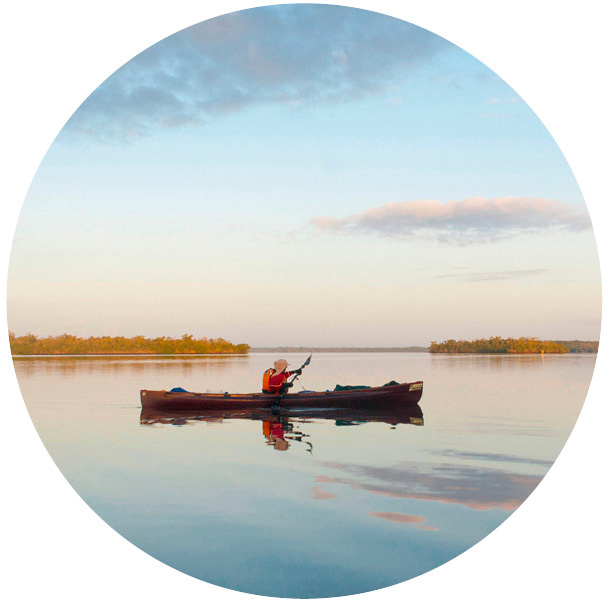
Challenging ▷ Wilderness Waterway, 99 miles (159 km). The ultimate adventure, this trail leads through lush creeks, lakes, and rivers and takes even the most intrepid 7–10 days to complete. You’ll need to camp, and will require a permit plus a lift back to the start.
FLORA AND FAUNA
Florida Panther
At one point, this distinct subspecies of mountain lion ranged from Florida to Louisiana and even Arkansas. By the mid-1950s it was almost extinct due to poaching and human encroachment on its habitat. Today there are around 120 living in the wild, making it critically endangered. The park is one of the few places it inhabits.
Endangered in the Everglades
The Everglades’ ecosystem and Florida’s human population are in direct competition for this priceless commodity: roads and irrigation canals disrupt the natural through-flow of water from Lake Okeechobee, and the drainage of land for development has also had detrimental effects on wildlife.
All is not lost, though: the state and federal governments are studying how best to protect the area, and a host of wildlife still manages to make a home here. Place names like Bear Lake, Snake Bight, Trout Cove, and Alligator Creek emphasize what some of those creatures are. This is one of the last refuges for the Florida panther, and the West Indian manatee is another threatened species. These huge but endearing creatures, with their gentle ways and graceful movements, are mesmerizing. The seemingly ubiquitous American alligator has been on the endangered species list, as has the more reclusive American crocodile. Whether you drive, hike, or kayak through the Everglades, don’t be deceived by the seeming abundance of wildlife, but savor the privilege of seeing it.
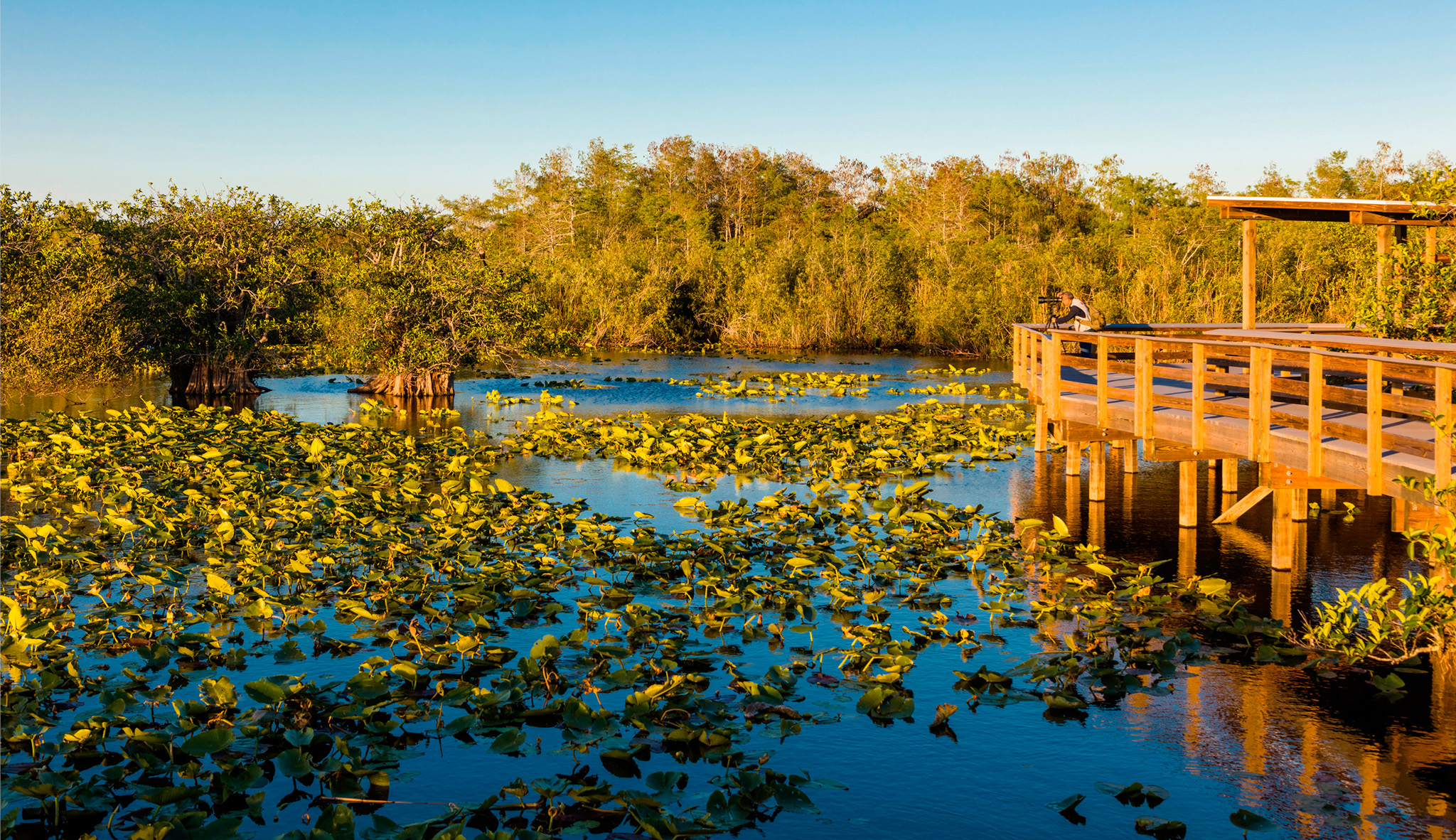
The popular Anhinga Trail winds through sawgrass marsh
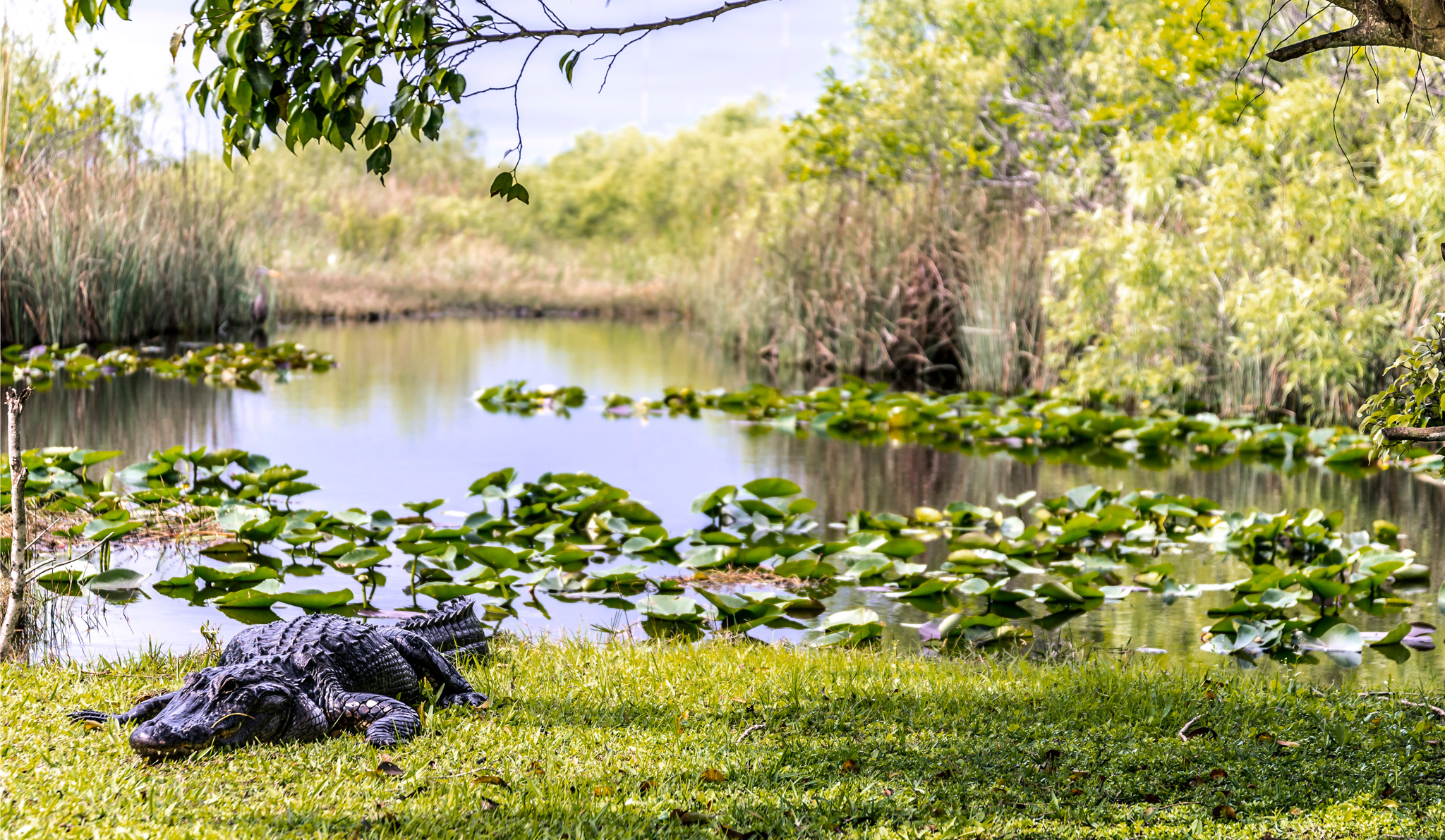
The American crocodile, which lives in these waters, is a shy species
Through the Seasons
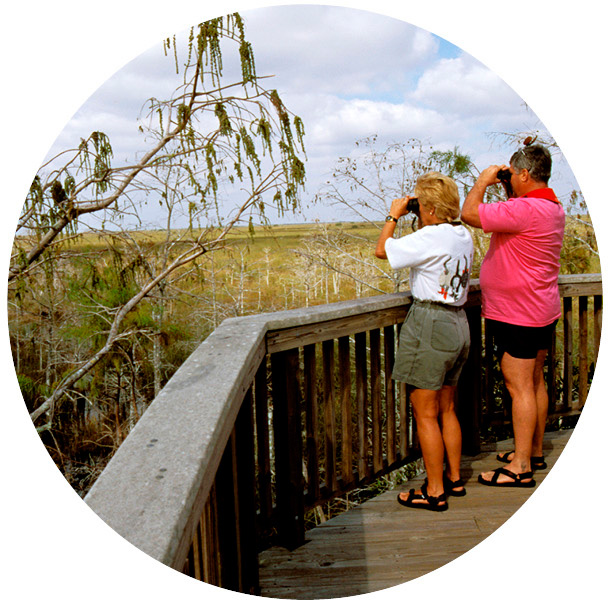
Spring ▷ This is prime dry season, and the animals get more active as the temperatures warm up. Wildlife is at its most diverse and visible, so pack your binoculars and your best camera gear. This is also the best time to take on lengthy hikes in the pleasant climate.
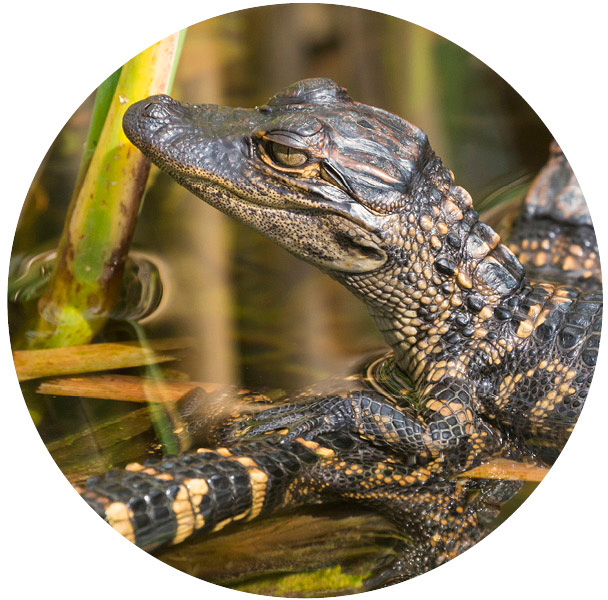
Summer ▷ The Everglades become intense at the start of the wet season, when both heat and rain increase. With the humidity and swarms of biting insects, this is a quiet time, so welcome the solitude on scenic kayak trips. It’s also when you’ll have the best chance to see baby alligators.
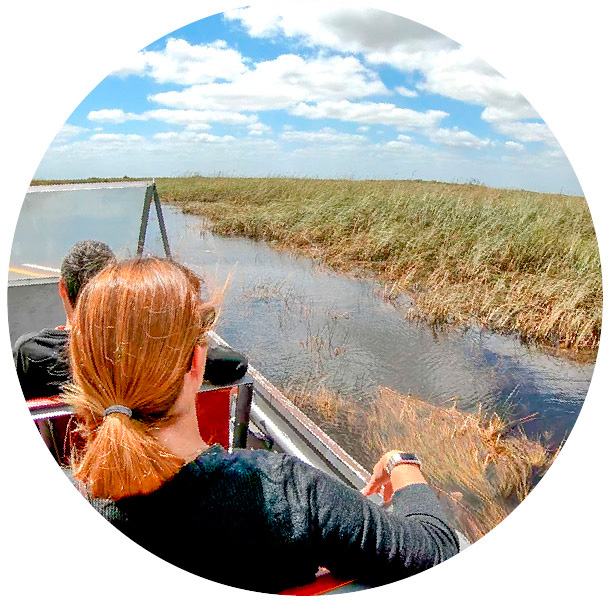
Fall ▷ The wet season has its charms: more migratory birds, warm weather, and a park that’s practically all yours. On an airboat ride, an enjoyable breeze will keep you cool and the lower water levels make spotting wildlife a lot easier.
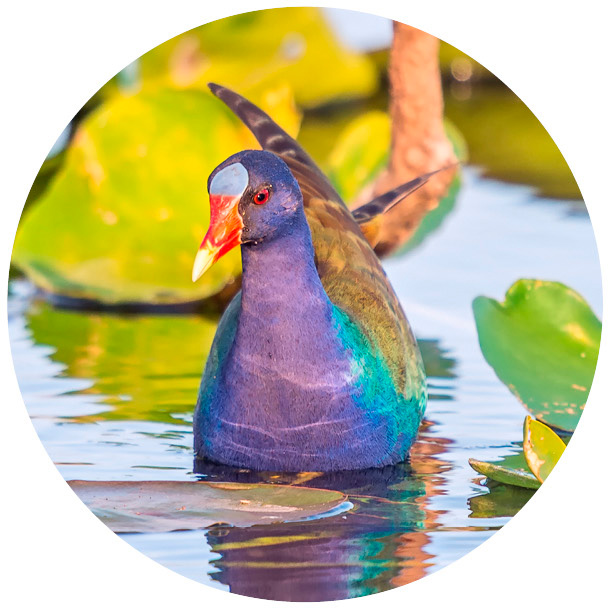
Winter ▷ Florida draws the birds escaping the harsher winters of more northerly climes in the winter, making the park prime birdwatching territory. As the dry season approaches, the mosquitoes also decline, and the park throngs with visitors.

The vast untouched wetlands is a sight to behold, nestling forests that radiate a dense green glow
Did You Know?
The Florida Everglades is the only place in the world where you will see alligators and crocodiles living side by side.
